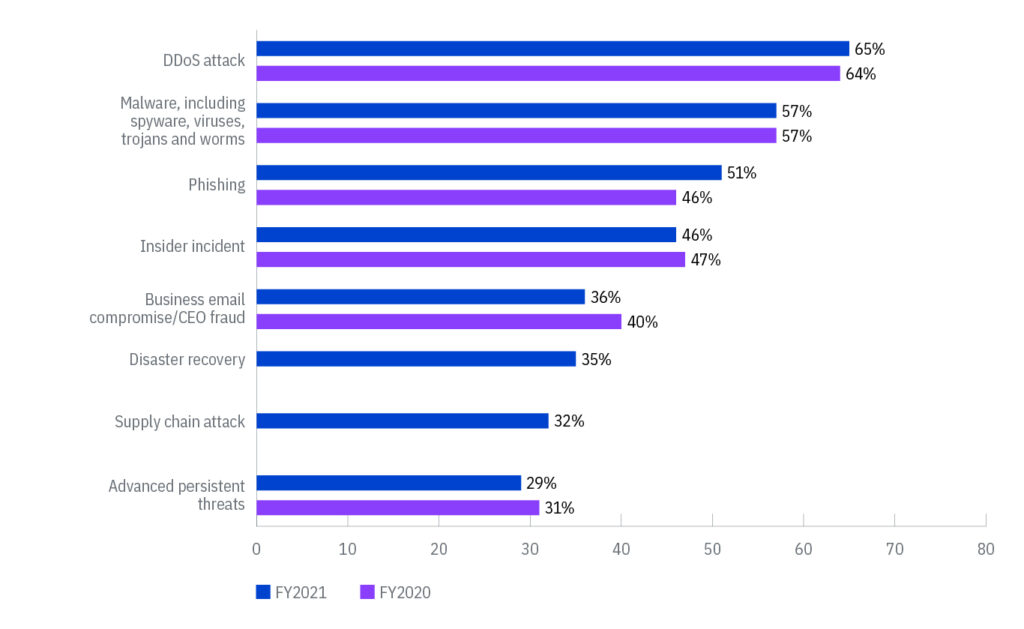If business continuity and disaster recovery were people, they’d be those slightly annoying relatives always pestering you to be “better safe than sorry.” While you may get tired of hearing the same message over and over again, they are unfortunately prophetic when a disaster — sayyyy, like a data breach — decides to pay an unsolicited visit.
Business continuity is expensive to lose
IBM’s 2021 Cost of a Data Breach Report estimated that it takes an average of 287 days to identify and contain a data breach. As a comparison, Boeing can build a 737 from soup to nuts in 9 days. Put another way, if data breaches were journeys, they would be grueling marathons, not breezy morning jogs.
But beyond the temporal, there’s a more ominous side to these cybersecurity breaches. IBM also calculated that the average total cost of a data breach in 2021 was a staggering $4.24 million, the highest in 17 years. This represents a 10% increase from the previous year — a somber reminder that threats are growing more pervasive and more complex.
So, why the hefty price tag? For starters, there are immediate, tangible costs — things like hiring forensic experts, outsourcing hotline support, offering credit monitoring services for affected customers, and incurring legal expenditures and regulatory fines.
But the hidden, long-term costs often pack a heavier punch. These include lost business, tarnished brand reputation, reduced customer loyalty, and the steep investment needed for the organization’s IT transformation (not to mention the intangible stress and frustration that comes with managing the aftermath of a breach). We laid out a lot of this in another blog post about the cost of IT downtime here.
So why aren’t companies better prepared?
Despite all of this, many companies remain underprepared. According to a 2021 study by IBM, only 46% of companies have specific incidence response plans for various threat vectors. This gap between risk and readiness isn’t just alarming — it’s a ticking time bomb.
Types of attacks for which organizations have incident response plans

Source: IBM
Only 46% of respondents said their organizations had specific incident response plans for at least one of the eight types of cyberattacks listed above. Among those organizations:
- Only 32% of those surveyed said their organizations have a plan for supply chain attacks
- Only 35% said their organizations have a plan for disaster recovery
- Only 40% of organizations’ leaders regularly assess third-party risk
The bottom line — invest a little money to save a lot of money
The silver lining? Investing in cybersecurity doesn’t just prevent potential damage, it brings about a substantial return on investment. According to the same IBM study, an investment in AI and automation for cybersecurity resulted in an average savings of $3.58 million during a data breach, compared to businesses that did not make such an investment.
The key takeaway here isn’t just that disaster recovery and business continuity are essential — we all know that by now. It’s that businesses must shift their mindset from viewing them as optional insurance policies to seeing them as critical business assets.
Furthermore, organizations must invest in building a culture of security awareness among employees. It’s often the human element that becomes the weakest link in the cybersecurity chain. This means training staff to recognize and avoid potential threats, along with building a robust technological infrastructure that can preempt and respond to breaches effectively.
As we navigate the intricate labyrinth of cyber threats, it becomes clear that managing this herculean task in-house may not be feasible for small and medium-sized businesses. That’s where we come in — as your trusted IT partner, a managed service provider can assume the role of your full-time cybersecurity team at a fraction of the cost.
Opting for MSPs like Leverage means gaining a seasoned, dedicated team that constantly monitors your IT environment, staying ahead of potential threats, and ensuring rapid disaster recovery. MSPs also help businesses maintain compliance with changing regulations, a task often too convoluted for small and medium businesses to handle themselves. With an MSP managing your IT services, you’re free to focus on what you do best — running and growing your business.


Dive straight into the feedback!Login below and you can start commenting using your own user instantly